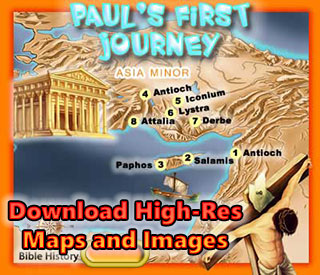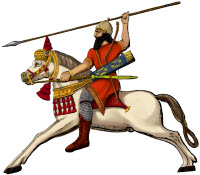|

|
|
|
|
Kids Bible Blog: Middle East History
The Holy Land in the Bible: Israel and Palestine Through the Ages
The land of Israel and Palestine is often called the "Holy Land" because it is deeply connected to the religious traditions of Judaism, Christianity, and Islam. These lands have been home to many of the Bible’s most famous stories and figures, from Moses and David to Jesus and Muhammad. But beyond the Bible, the region has witnessed thousands of years of history, filled with empires, conflicts, and important cultural and religious events. In this article, we will take a journey through time to explore Israel and Palestine’s biblical past, its history through the ages, and how it remains significant today.
The Bible and the Beginning of the Holy Land
The story of Israel and Palestine in the Bible begins with a promise. In the Old Testament, God promises the land of Canaan to Abraham, the patriarch of the Israelites. According to the Bible, Abraham’s descendants, the Israelites, were destined to inherit this land.
Abraham is a key figure in the Bible, and his journey to the Holy Land marks the beginning of the Israelites' connection to the land of Canaan. His story is found in the book of Genesis, where God calls him to leave his home and travel to a new land,...
Read More »
Tags: Israel Ancient Israel history Ancient Israel Bible history Bible study Religious Sites Biblical History Christianity Palestine Bible Ancient History Middle East Jerusalem King David Bible Stories Israeli-Palestinian Conflict Israelites Judaism Islam Second Temple Middle East History Holy Land Modern History
Exploring Ancient Iran: The Kingdom of Persia and Its Amazing Empire
The story of ancient Iran is a tale of powerful kingdoms, amazing achievements, and vast empires that shaped the history of the world. Known for its rich culture, impressive art, and strong military prowess, ancient Iran, or Persia, was home to one of the greatest civilizations in history. Today, Iran’s influence continues, but it is fascinating to look back at how this incredible empire grew and flourished. Let’s embark on a journey through time to explore the Kingdom of Persia, its remarkable empire, and the legacies it left behind.
The Rise of the Persian Empire: The Achaemenid Dynasty
The history of Persia can be traced back to the Achaemenid Empire, which was founded by Cyrus the Great in the 6th century BCE. This empire would go on to become one of the largest and most powerful in ancient history, stretching from modern-day Iran all the way to parts of Greece, Egypt, and India.
Cyrus the Great (circa 600-530 BCE) is one of the most famous figures in Persian history. He united the various Persian tribes and created the first Persian Empire. Cyrus is known for his fair and tolerant rule, especially toward the peoples he conquered. Rather than forcing them to abandon their...
Read More »
Tags: Ancient History Middle East History Ancient Persia Iran Persian Empire Cyrus the Great Darius the Great Achaemenid Dynasty Zoroastrianism Persepolis Persian Culture Alexander the Great Ancient Civilizations
What Happened to Ancient Jerusalem? A Peek Into Its Rich History
Jerusalem is a city that holds immense historical, religious, and cultural significance. Revered by Jews, Christians, and Muslims alike, this ancient city has witnessed the rise and fall of empires, the destruction and rebuilding of temples, and countless pivotal moments in world history. In this article, we will take a journey through time to explore the fascinating and complex history of Jerusalem, from its earliest days to its role in modern times.
The Early Beginnings of Jerusalem: A City in Ancient Canaan
The history of Jerusalem dates back thousands of years. It is believed that the city was founded around 3000 BCE, making it one of the oldest cities in the world. The first known mention of Jerusalem comes from an ancient Egyptian text, the Exodus Texts, which refer to it as Urusalim, meaning “Foundation of Peace.”
Canaanite Jerusalem: In the early days, Jerusalem was a small Canaanite city, inhabited by the Jebusites. The city, positioned strategically between the northern and southern parts of ancient Israel, was an important trading center. Its elevated position on a hill made it easy to defend from invaders, and its proximity to key water sources was crucial for its survival.
King David and the Unification of Israel: The...
Read More »
Tags: Roman Empire Christianity Ancient History Jerusalem Judaism Islam Second Temple First Temple Byzantine Empire Maccabean Revolt Jewish History Christian Pilgrimage Muslim Holy Sites Middle East History
Kid's Bible Maps
Bible History Online
The Geography of the Bible
© Bible History Online (https://bible-history.com)
Made by Network Local

Kids Bible Maps
About
Us
Contact Us
To
Parents
To
Teachers
Kids Bible Blog
Using Our Maps
Mission
Statement
Doctrinal
Statement
Instructions
Popular Bible Maps
The Journey of Abraham
Moses and the Exodus
Joshua and the Land
The Kingdom of David
The Kingdom of Solomon
Israel in Jesus' Time
Paul's First Journey
The Land of Israel
The Land of Egypt
The Land of Assyria
The Land of Babylon
The Land of Persia
The Land of Greece
The City of Rome
Noah's Ark and Mt. Ararat
The Tower of Babel
The Old Testament World
The New Testament World
Ancient Empires
Moses and the 10 Plagues
Ancient Peoples
The 10 Commandments
The 12 Tribes of Israel
The Ministry of Jesus
Bible Stories with Maps
Daniel in the Lions Den
David and Goliath
Baby Moses
Jesus and the Little Children
Coloring Book Images
Coloring Book
Donkey
Camel
Lamb
Noah's Ark
Noah's 3 Sons
Abraham
Sheep
Lion